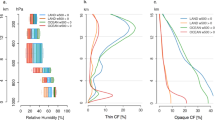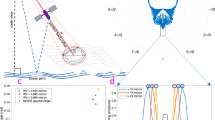Abstract
ATMOSPHERIC refraction is such a varying quantity that no rule respecting it can be laid down applicable in all circumstances; as in cases of mirage, for instance, where vessels below the horizon are seen standing above it, and turned upside down. The refraction of the sea horizon is the great difficulty in obtaining correctly the position of vessels at sea. This can be eliminated in most cases by taking observations of the heavenly bodies to opposite sides of the horizon; for latitude in a north as well as in a south direction; for longitude in an east as well as in a west direction. When only one heavenly object is available this is not always practicable, but it can be done when the altitude is 60° or upwards.
This is a preview of subscription content, access via your institution
Access options
Subscribe to this journal
Receive 51 print issues and online access
$199.00 per year
only $3.90 per issue
Buy this article
- Purchase on Springer Link
- Instant access to full article PDF
Prices may be subject to local taxes which are calculated during checkout
Similar content being viewed by others
Rights and permissions
About this article
Cite this article
TIZARD, T. Distance of the Visible Horizon. Nature 92, 96–97 (1913). https://doi.org/10.1038/092096d0
Issue Date:
DOI: https://doi.org/10.1038/092096d0
Comments
By submitting a comment you agree to abide by our Terms and Community Guidelines. If you find something abusive or that does not comply with our terms or guidelines please flag it as inappropriate.



